Yogo
Yogo was a prototype yogurt vending machine that I designed and built as part my Design Engineering Masters at the University of Bath. As a person who eats snacks frequently, it always annoys me how vending machines only offer unhealthy products. Not only this, they also fail to fill me as much as I would expect them to. Based on that problem, I decided to do my final year project on designing a vending machine that provided healthier and nutritionally denser snacks.
Info
2019 - 2020, 4 months
Role
Designer Engineer
Context
Masters Project @ University of Bath
Skills
User Research, Market Research, Concept Design, Prototyping, Software Engineering, Electrical Engineering, UI Design
Tools
MATLAB, Simulink, Arduino, 3D Printing, InVision Studio
The Challenge
The main challenge was to find the perfect snack. I somehow convinced over a hundred people to fill in a survey to understand more about snacking habits. This was followed by a few face-to-face interviews to dive deeper into questions that had come up from the survey. All this research, combined with some market research and feasibility studies led to my decision of building a yogurt vending machine. One of the key findings was that people have quite varied snacking habits, in terms of ingredients and portion size. So to conclude the research phase, I set the target to design a vending machine that served yogurt that could be customised with different toppings and sizes.

Concept snack based on user and market research
The Process
The goal of the project was to build a functional prototype of the machine. To start, I focused on the yogurt dispenser. This involved research in the areas of packaging, storage and dispensing. I designed multiple concepts and iterations and the final choice was a rolling pin that rolled down using a lead-screw and squeezed the yogurt out of a disposable plastic pouch.
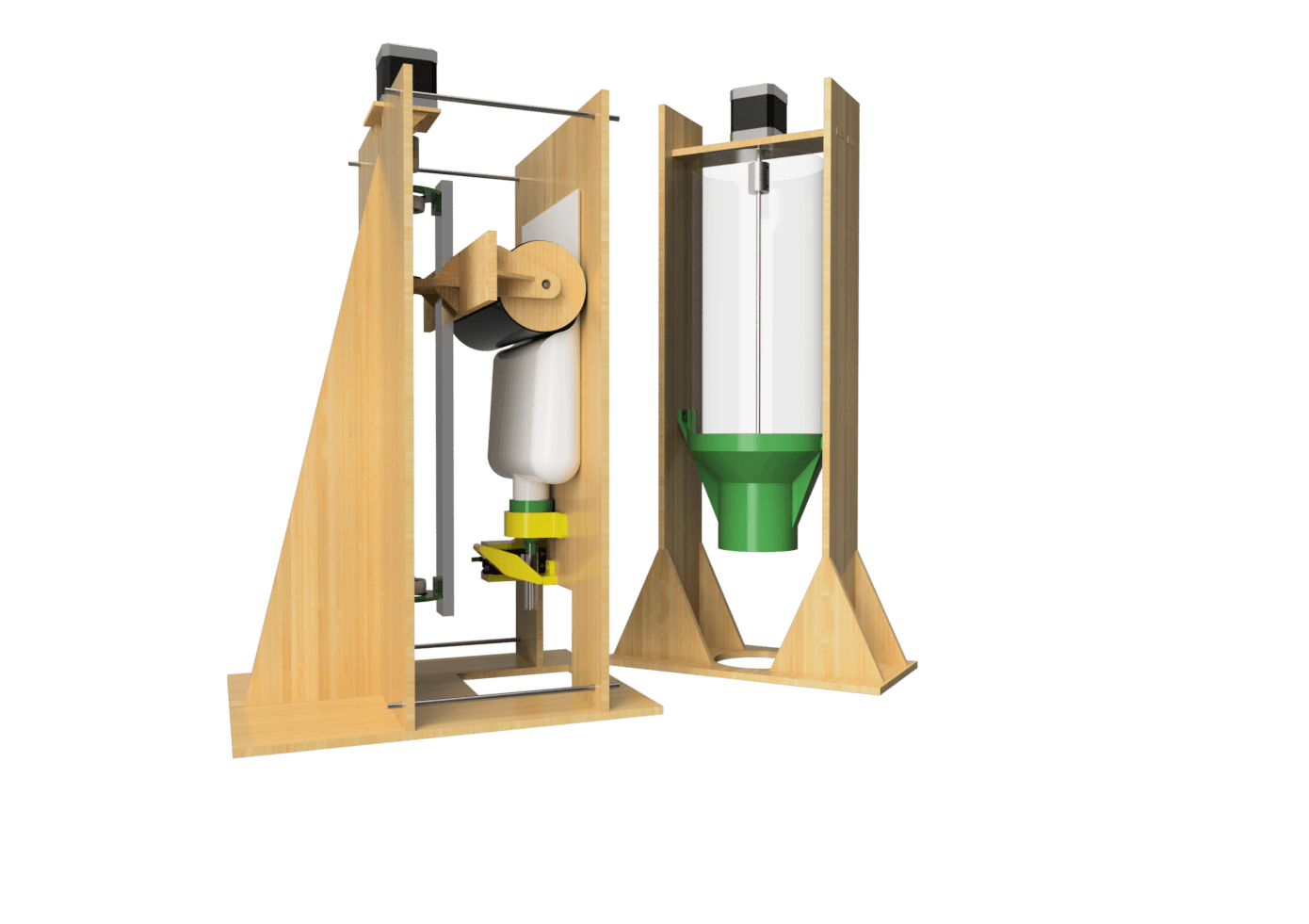
Render of the yogurt (left) and granola (right) dispensers, designed in Fusion 360
I then moved on to designing the second subsystem: a granola dispenser. For this, I designed an archimedes screw. The screw, subject to the rotation of a stepper motor provided a great solution to dispense granola accurately and continuously.
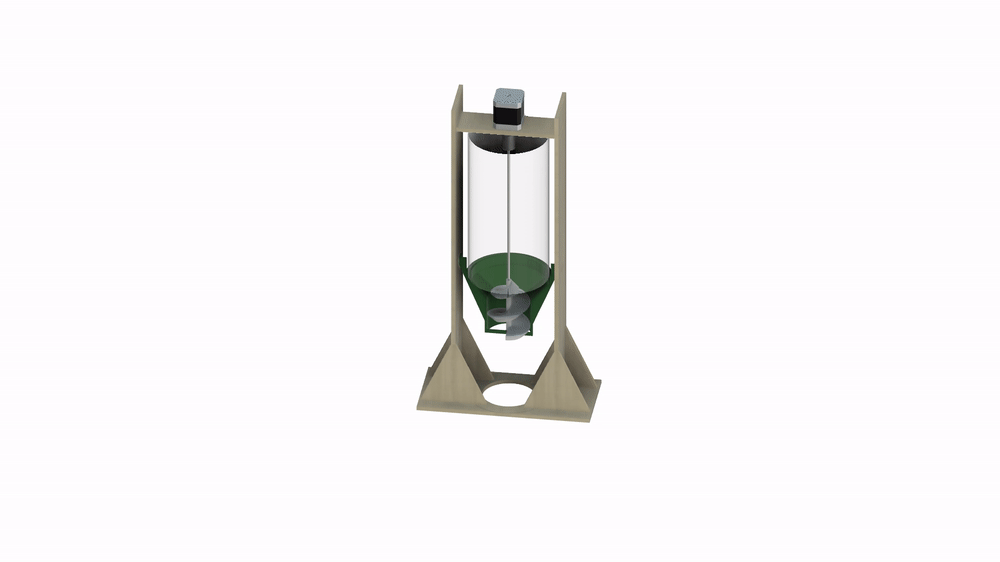
Animation of the granola dispenser mechanism
Both subsystems were designed in Fusion 360 and built with laser cut plywood and custom 3D printed parts.
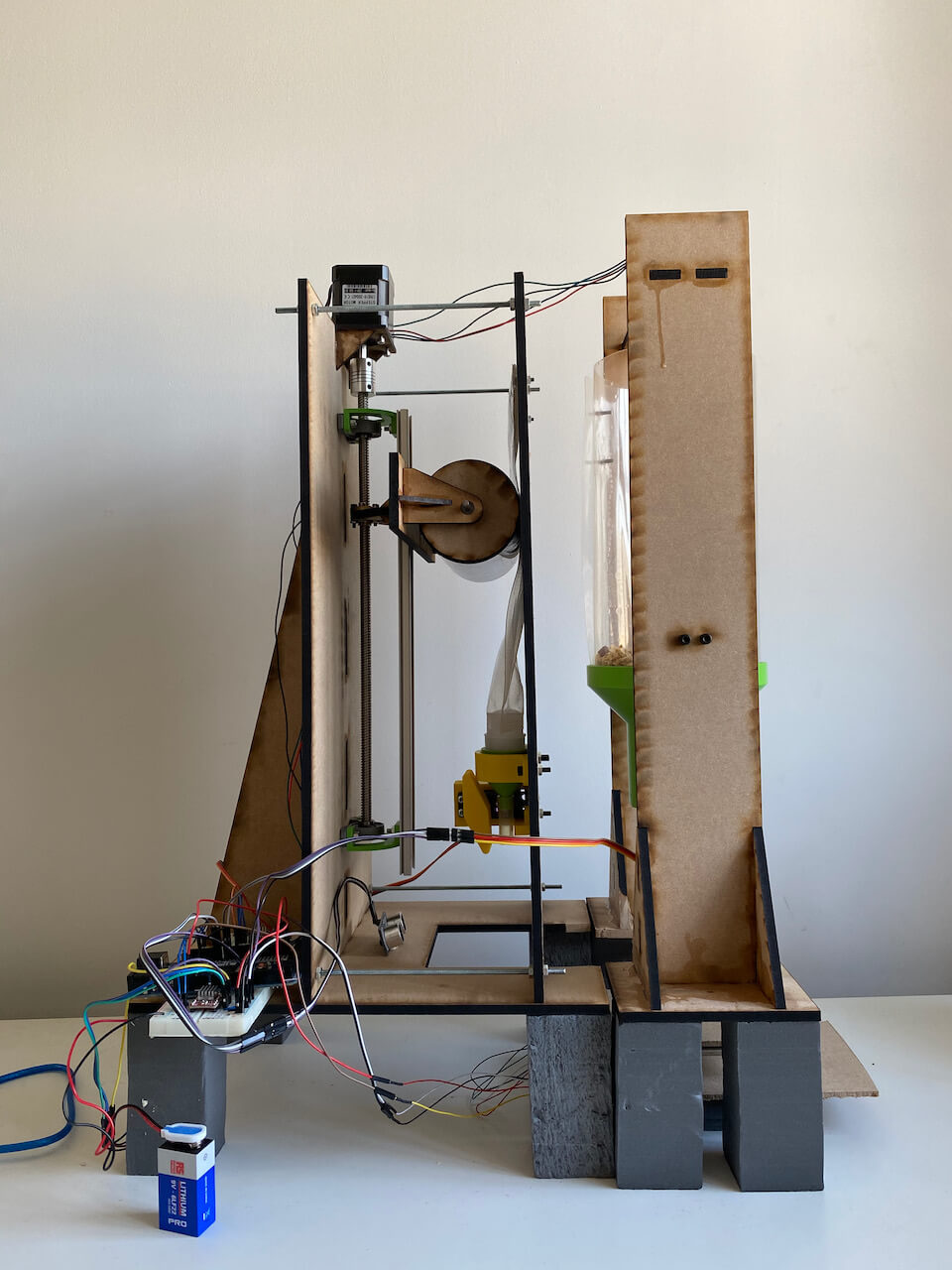
A picture of the two subsystems and electronics
I used an Arduino Mega to control all sensors and actuators. Two ultrasonic sensors were used to detect when a cup was placed under the yogurt and granola dispensers. A load cell and an analogue to digital converter voltage amplifier were used to detect the weight of the cup and close the feedback loop. This allowed users to enter their desired yogurt and granola amounts, and let the system do the rest.
Unfortunately, the prototype couldn't be completed due to the closure of the University's installations because of COVID19. As a result, a conveyor belt couldn't be built to move the cup between the yogurt and granola dispensers.
The Result
The closure of the University less than 2 months into the project forced me to change the plans for the month that we had left to complete the project. Although I could still work on the software, I couldn't make any improvements to the hardware at that point. Instead, I worked on a concept design for the entire machine and a mobile app for users to order their snacks from their phones. For the machine concept design, I aimed to find the optimum layout for an optimised packaging of the subsystems, taking into consideration things like refrigeration and refilling of toppings.
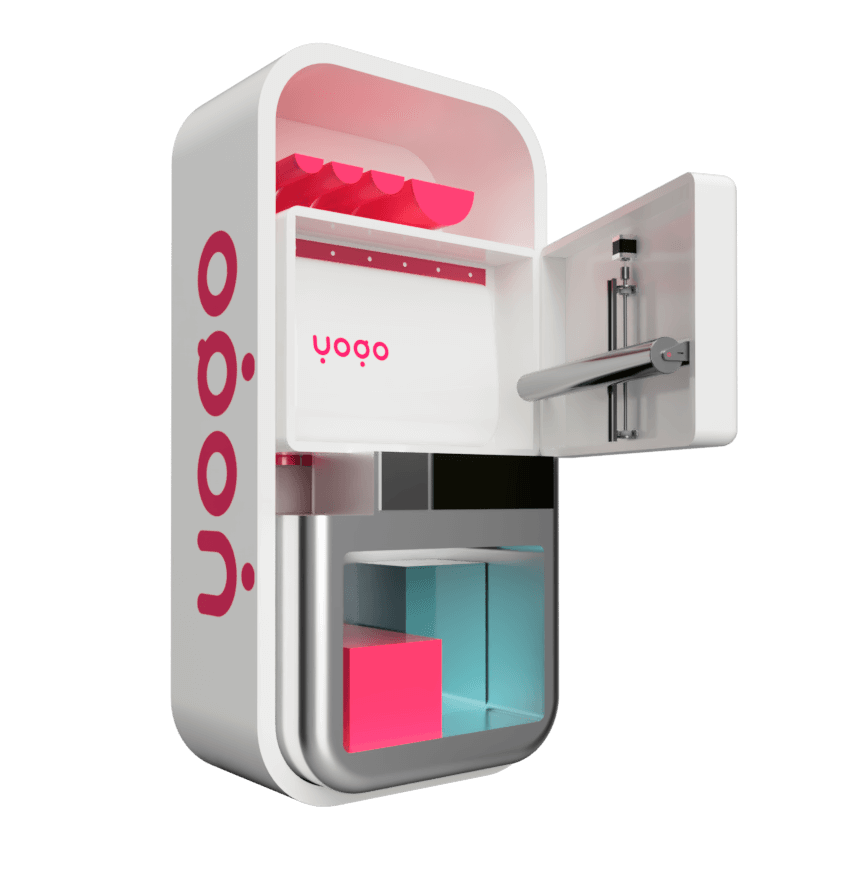
The concept design for the vending machine was also created in Fusion 360 and implemented the mechanisms designed for the prototypes
Time constraints limited the amount of work I could put into the mobile app. I had already created a basic GUI on Simulink to control the prototype machine, so I decided to focus on designing the user interface and experience. This was my first time designing a digital interface. I did some user research with low-fidelity paper wireframes to investigate different concepts for the interface. I then applied what I learnt from user research and other design principles to a high fidelity prototype using InVision Studio.
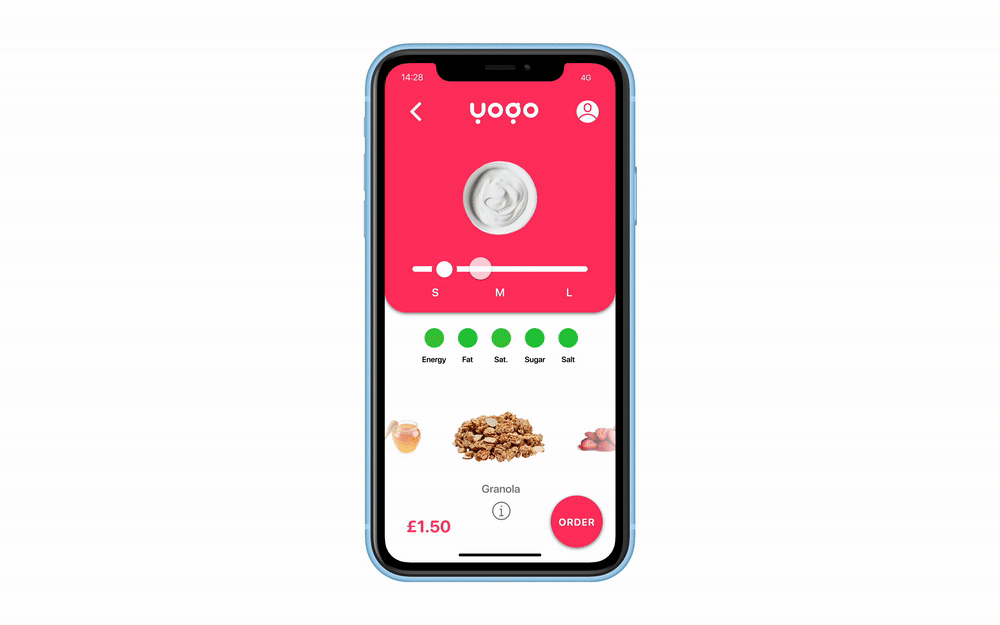
Selecting the yogurt size

Viewing the options for yogurt toppings
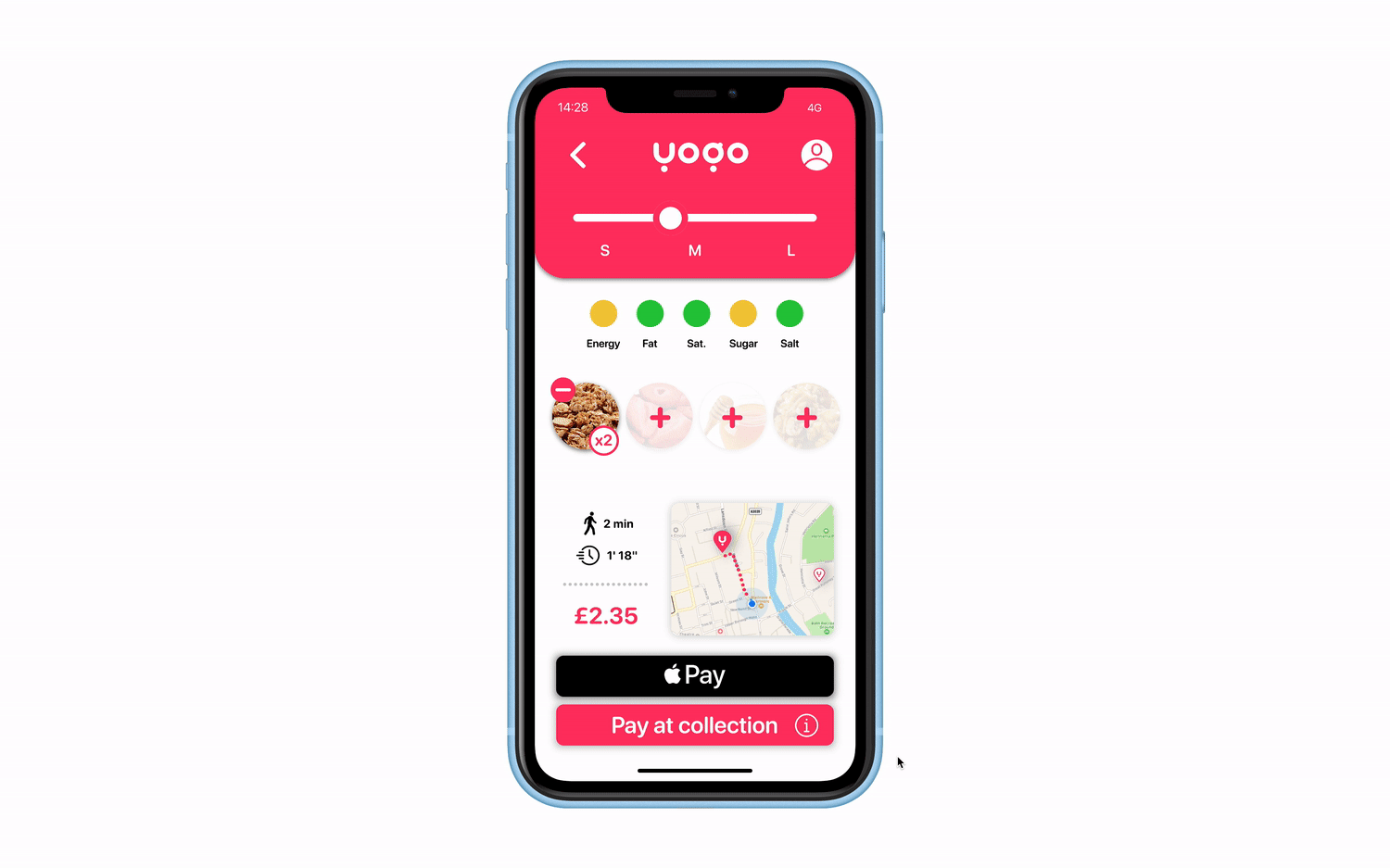
Paying for the yogurt and receiving confirmation
Overall, this project was a great experience, where I was able to apply all my learning from the previous years at University. Being able to combine hardware, software, electronics and design into a single prototype was a great way of showcasing the skills I had gained while at University.
Video of the final functional prototype